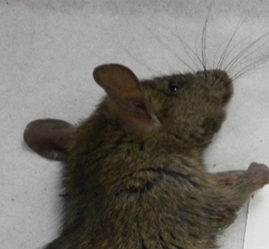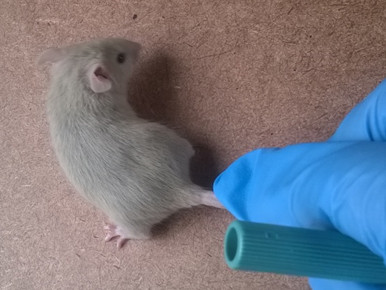27 July 2021 | By Rolanda Julius
A study by Dr Rolanda Julius (former C∙I∙B postgraduate student) and Prof Chris Chimimba (C∙I∙B Core Team member) has detected the presence of Rat-bite Fever (RBF) agents in invasive species of brown rats (Rattus norvegicus), black rats (Rattus rattus) and Asian house rats (Rattus tanezumi) sampled in urban areas of Gauteng Province, South Africa.
Rat-bite fever (RBF) is a zoonotic disease that is transmitted to humans through bites and scratches from rats that are infected by certain Streptobacillus bacteria. This disease, which is often overlooked, can have serious human health impacts, including death.
South Africa’s urban areas and informal settlements are home to large populations of invasive rats and a recent increase in rat bite incidents has left researchers wondering whether Rat-bite Fever agents are present in invasive rats in these areas.
Streptobacillus bacteria may be present in all wild rats but there is a shortage of information about its prevalence in South Africa. Through genetic sequencing of four gene regions, Julius and Chimimba identified Streptobacillus moniliformis in brown rat samples, while Streptobacillus notomytis was present in black rat and Asian house rat samples. Colonization rates of over 50% were detected and marked the first report of Streptobacillus detected in Asian house rats.
Black rats and Asian house rats are considered part of the Rattus rattus species complex because they show some genome introgression. Julius and Chimimba found that 32.3% of the Asian house rats were Streptobacillus-positive compared to 61.5% of the black rats.
“We were surprised that while the two species were colonized by the same Streptobacillus species, they had an almost two-fold difference in colonization rates,” says Julius, lead author of the study published in Yale Journal of Biology and Medicine.
Streptobacillus notomytis along with three other species in the genus was only recently described. However, the bacterium has since shown to have similar clinical presentation to that of S. moniliformis.
This study shows the importance of host confirmation in zoonotic disease research and the relevance of regional specific studies. It also highlights the public health risk associated with the presence of invasive rats.
Julius adds, “I believe Rat-bite Fever is likely to be widespread in South Africa, but as it requires a PCR test for confirmation, it likely goes undiagnosed.”
Read the full article
Julius, R.S., Brettschneider, H., Chimimba, C.T. and Bastos, A.D.S. 2021. Prevalence and Diversity of the Streptobacillus Rat-bite Fever Agent, in Three Invasive, Commensal Rattus Species from South Africa. Yale Journal of Biology and Medicine 94, pp.217-226. (https://www.ncbi.nlm.nih.gov/pmc/articles/PMC8223543/pdf/yjbm_94_2_217.pdf)
For more information, contact Rolanda Julius at rolanda.julius@uct.ac.za



